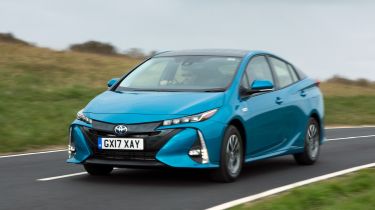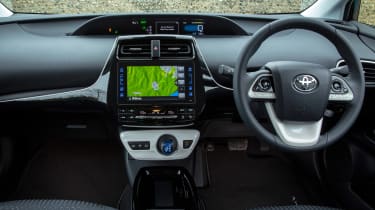New Toyota Prius Plug-in hybrid 2017 review
The Toyota Prius Plug-in makes a convincing case for itself as we drive it in the UK for the first time

The Toyota Prius Plug-in is one of the most convincing PHEVs yet. To truly benefit from its low running costs, you’ll need regular access to a plug, but even when the batteries run dry, it’ll return respectable fuel economy. The question you’ll need to ask is whether you really need that 30-mile EV range. The standard Prius is already an excellent car, so we’d recommend considering how you’ll use the Plug-in before taking the plunge.
Plug-in hybrid vehicles have come a long way in the past two or three years, but the fact remains that you’ll need regular access to a charge point to get close to manufacturers’ fuel economy claims.
In fact, many will actually return fewer miles per gallon than normal petrol or diesel rivals if you fail to plug them in at the end of every journey. In theory, the Toyota Prius Plug-in is no different. It has only a 30-mile EV range, so you’ll need a short commute to run the car solely on battery power.
• Best hybrid cars on sale right now
That formed part of our verdict when we tested the plug-in Prius in Europe earlier this year, but now we’ve got the car here in Britain to see if it can challenge the standard model for your hard-earned cash.
The headline figures are impressive. Even before you consider the all-electric range, the Prius Plug-in commands a rock-bottom nine per cent Benefit in Kind rating – it’s 13 per cent for the standard car – resulting in a big saving for business users. It falls foul of the new VED tax bands, however, so private buyers will pay a flat rate £130 per year, the same as for a normal Prius.
Keep the batteries charged, though, and you could feasibly run the Prius PHV without ever filling up with petrol. The 30-mile EV range is double what it was before, and the various drive modes allow you to minimise the drain on the battery by ramping up the regenerative braking. Run the batteries dry and the quiet petrol engine kicks in without interruption.
The Prius Plug-in juggles its power sources remarkably effectively. Plant the throttle and the revs rise, but the cabin is well insulated and engine noise is rarely intrusive. We were impressed with the car’s fuel economy, too; even without access to a plug, the PHV returned more than 60mpg.
This is still a car best suited to town driving, though. On longer journeys, the flat-bottomed seats offer little support, while the shortage of power can be frustrating on the motorway.
And despite the fact that prices have been slashed since launch, it’s still around £4,000 more than conventional Prius. A BMW i3 offers more electric range, too. But standard kit is good, with Toyota Safety Sense, sat-nav and a rear-view camera all included.











